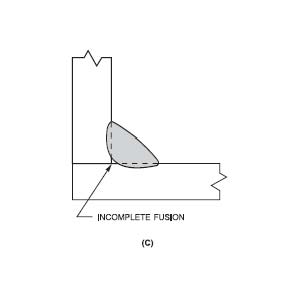Most people do small welds with GTAW and have too small of a tungsten and to low output of a machine. It will not adequately weld the type of application referenced here, unless, as Al stated in a later post, it is on some pretty thin tubing. But then, if it was that light weight, why would it have broke. They also are running very small beads that don't carry the kind of heat for depth of fusion since they are running small tungsten.
Another example, GMAW-S, (you asked about my statement which was not solely directed at this threads application). You are not to use it as a Pre-Qualified on structural and for good reason, it is not adequate for a large percentage of the welds found in the work. And, even if you get a PQR stating you can do it, most engineers will not accept the process to do their work anyway.
Same on heavy equipment, I will use GMAW-S on some light materials on a machine, but when doing major repairs on main members I use either SMAW, GMAW spray, or my first choice- FCAW-G. I'm not going to use GTAW on heavy equipment for MOST of the work I need to do. Too slow and usually not hot enough.
All processes are good for a particular application where you need to stay away from some of the others. Then, on the next job, the ones you stayed away from are the ones you need while the others are the ones you avoid.
None of them is avoided all the time. But they all have their place. That's why my shop has SMAW, GTAW, FCAW (both Self and Gas shielded), and GMAW (both short and spray).
That's also why I have Air Arc Cutting, Oxy-Fuel cutting, and Plasma Cutting. Not to mention a bandsaw, chopsaw, cut off grinders, and an Ironworker/shear.
No one machine or process can do everything.
Specific for your application, without a lot more info, my first inclination would not have been to use the GTAW to weld it. And that would be a first 'Red Flag' to me when it broke. That doesn't mean it fit my term of being avoided like the plague because I wasn't there to know ALL the parameters of the application.
One more, "perform as well when the weld sizes are the same?" Yes and no. It will depend upon rather heat input is a factor. I can weld it faster with SMAW which in most cases is also going to contribute to keeping the heat input down. And that can, at times, be a consideration. More productive: most of the time, yes.
Have a Great Day, Brent



 ).
). 



